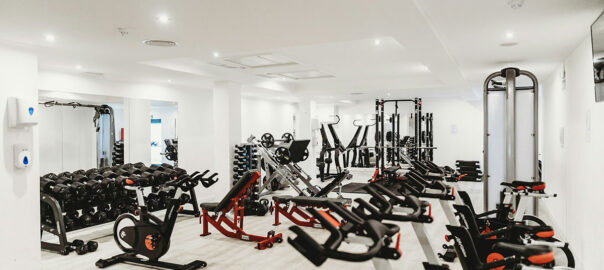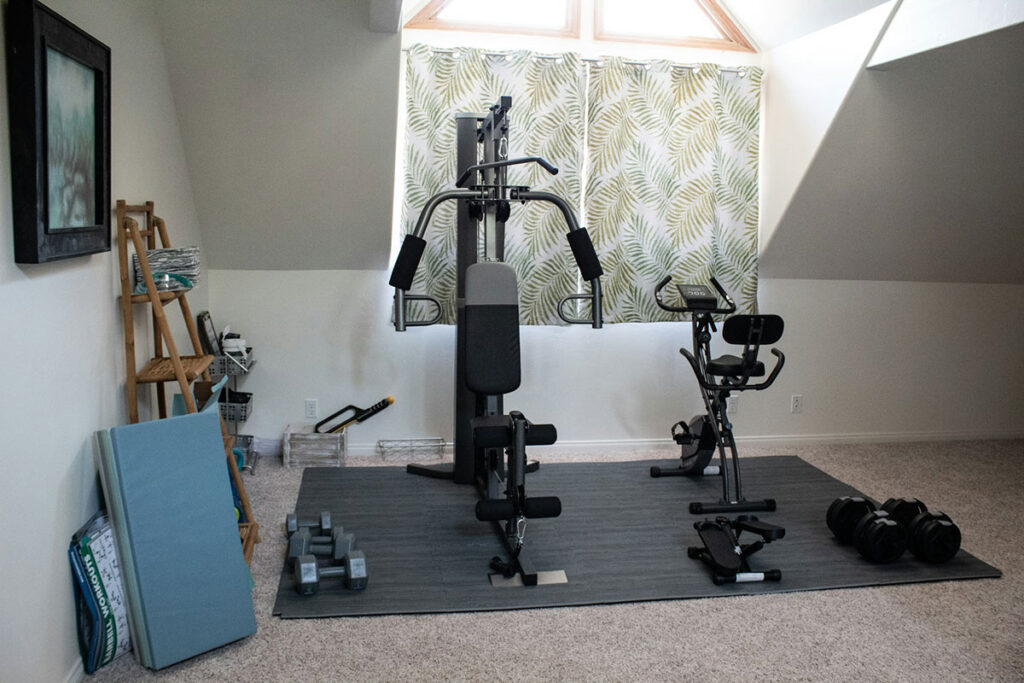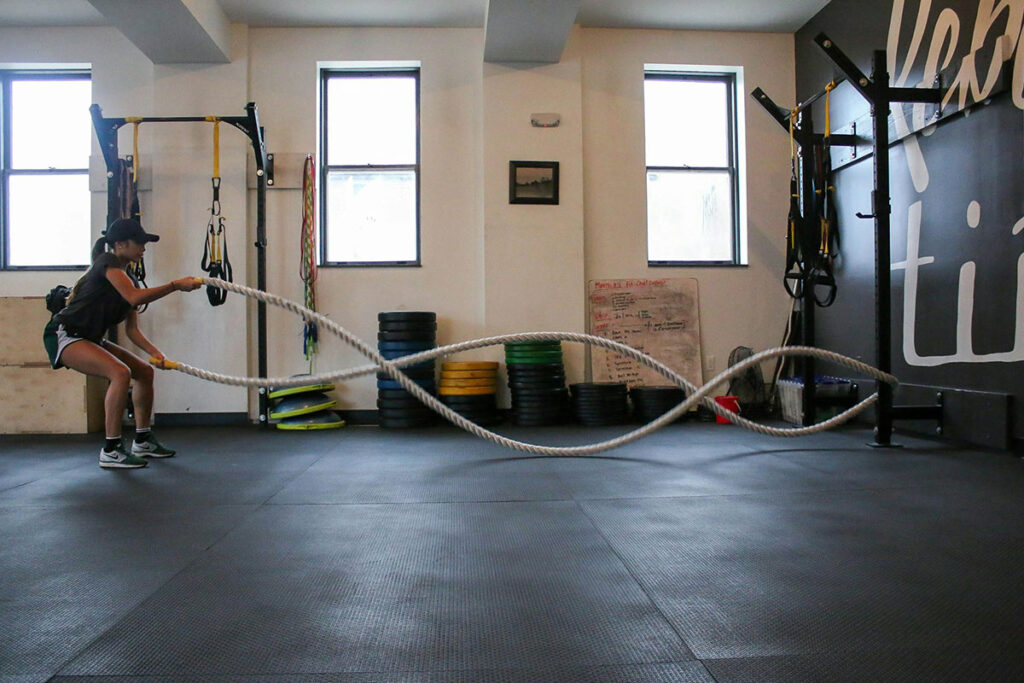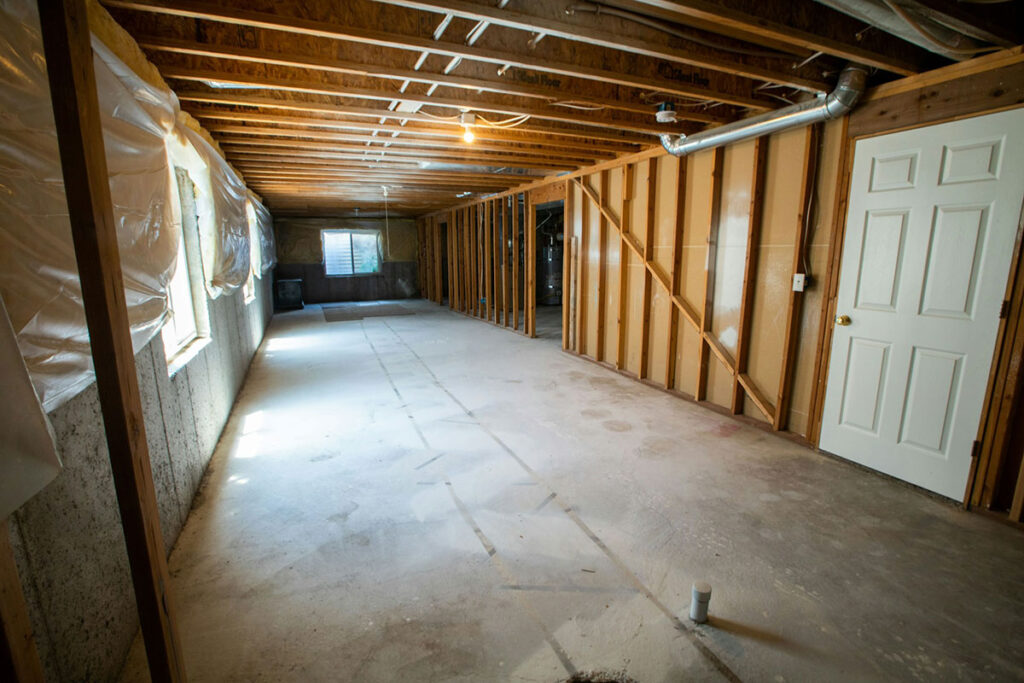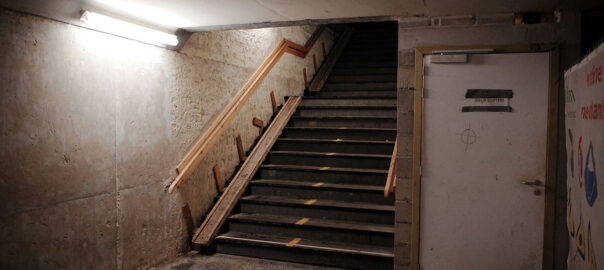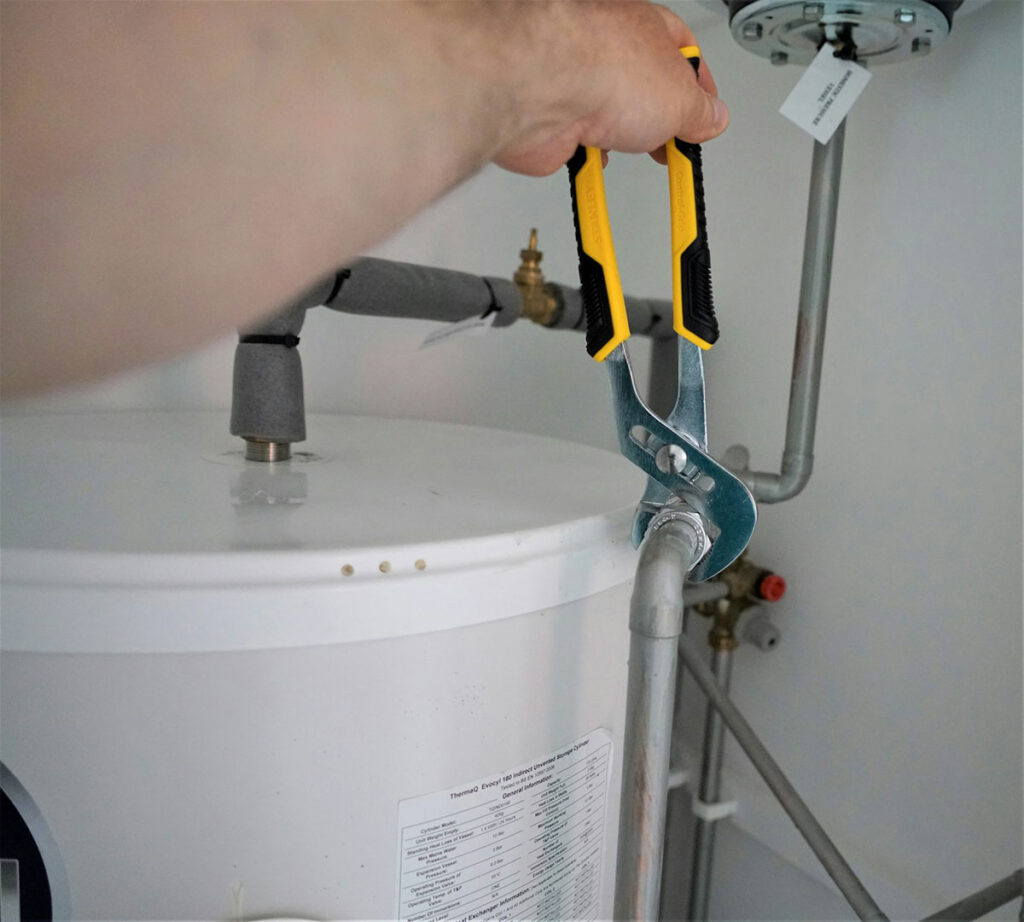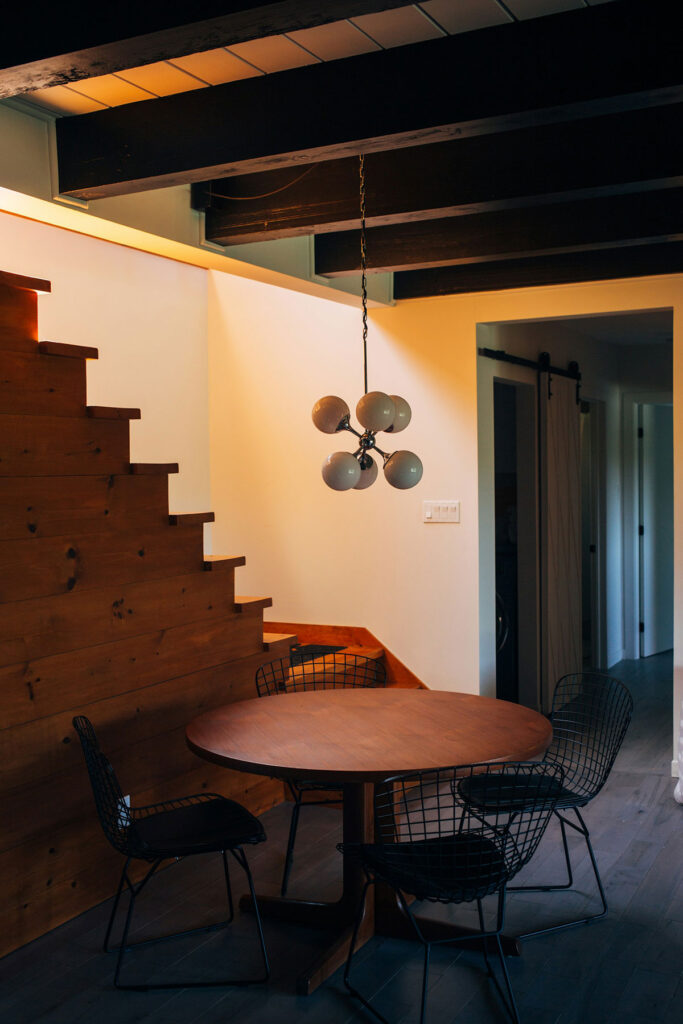As the world embraces the importance of health and wellness, the desire for a convenient and private space to work out has never been more significant. Transforming your basement into a home gym is a fantastic way to achieve fitness goals without leaving the comfort of your own home. This ultimate guide will take you through every step of the process, offering insights, tips, and inspiration to help you create the perfect home gym in your basement.
1. Planning Your Home Gym
Assessing Your Space
Before diving into the transformation, take a careful look at your basement space. Consider factors such as the size, ceiling height, and any existing features that could impact the layout. Understanding your space will help you plan the gym layout effectively.
Setting Fitness Goals
Define your fitness goals to tailor the gym setup to your specific needs. Whether you’re into strength training, cardio, or a mix of both, knowing your objectives will guide the equipment selection and overall design of the home gym.
Budgeting for Your Home Gym
Establish a budget for your home gym project. Factor in the cost of equipment, flooring, mirrors, lighting, and any additional amenities you plan to include. Having a clear budget will help you make informed decisions throughout the transformation process.
Designing the Layout
Create a detailed layout plan to renovate your basement for your home gym. Allocate space for different workout zones, such as strength training, cardio, and stretching areas. Consider the placement of mirrors, storage, and any other features that will enhance the functionality and aesthetics of the space.
2. Essential Home Gym Equipment
Cardio Machines
Depending on your preferences, consider including cardio machines like treadmills, elliptical trainers, or stationary bikes. Choose equipment that fits your available space and provides a variety of workout options.
Strength Training Equipment
Invest in a set of dumbbells, a sturdy weight bench, and a power rack for comprehensive strength training. Resistance bands and kettlebells are versatile additions that can enhance your workout routine.
Multi-Functional Machines
Space-saving multi-functional machines, such as a cable machine or a Smith machine, can add diversity to your workouts. These machines allow for a wide range of exercises without taking up excessive space.
Flooring
Selecting the right flooring is crucial to protect your basement and provide a suitable surface for exercising. Consider interlocking rubber tiles for shock absorption, durability, and ease of cleaning.
3. Creating the Right Atmosphere
Lighting
Optimal lighting is essential for creating an energizing and motivating workout environment. Incorporate a mix of natural light, if possible, and artificial lighting with adjustable brightness to suit different workout intensities.
Mirrors
Strategically place mirrors to check your form and posture during exercises. Mirrors also create the illusion of a larger space and enhance the overall aesthetics of the home gym.
Ventilation
Basements can sometimes be prone to poor ventilation. Install fans or an air circulation system to ensure a fresh and comfortable workout environment. Good ventilation is crucial for your well-being during intense exercise sessions.
Sound System
Create an uplifting atmosphere with a sound system that plays your favorite workout music. Consider installing soundproofing measures if your basement gym is close to living areas to minimize disturbance.
4. Designing Your Home Gym Aesthetics
Color Scheme
Choose a color scheme that energizes and motivates you. Consider vibrant colors like red or orange for a lively atmosphere or calming tones like blue or green for a more relaxed ambiance.
Inspirational Decor
Personalize your home gym with motivational quotes, fitness-themed artwork, or images that inspire you. Creating a space that reflects your goals and aspirations can enhance your dedication to regular workouts.
Organization and Storage
Keep your home gym clutter-free with adequate storage for equipment and accessories. Organizational solutions like shelves, racks, and storage bins will help maintain a tidy workout space.
Comfortable Seating Area
Include a comfortable seating area for rest and recovery between exercises. This space can also serve as a relaxation corner for stretching or meditation after your workout.
5. Safety and Maintenance
Adequate Lighting
Ensure that all areas of your home gym are well-lit to minimize the risk of accidents. Proper lighting is especially crucial in spaces with heavy equipment or potential tripping hazards.
Emergency Exit
Plan for a clear and accessible emergency exit route in case of any unforeseen incidents. Familiarize yourself with the exit points and keep them free from obstacles.
Regular Maintenance
Regularly inspect and maintain your equipment to ensure its safety and longevity. Lubricate moving parts, tighten bolts, and replace any worn-out components promptly.
Safety Equipment
Include safety equipment such as a first aid kit, fire extinguisher, and a phone for emergencies. Being prepared for unexpected situations contributes to a safer home gym environment.
6. Virtual Fitness Options
Virtual Classes
Explore virtual fitness classes that you can stream directly to your home gym. Many platforms offer a variety of classes, from yoga to high-intensity interval training (HIIT), providing diverse workout options.
Fitness Apps
Download fitness apps that cater to your specific goals. These apps often include guided workouts, progress tracking, and personalized training plans, adding a technological dimension to your home fitness routine.
7. Executing Your Basement Transformation
Now that you’ve laid the groundwork in planning your home gym, it’s time to dive into the execution phase of transforming your basement. This section will guide you through the practical steps and creative ideas that will bring your vision to life.
Professional Installation
Consider hiring professionals for the installation of specialized equipment and any structural modifications needed. This ensures safety and compliance with building codes. BIC Construction, with its expertise in basement finishing, offers tailored solutions for creating functional and aesthetically pleasing spaces.
Personalizing the Space
Make your home gym uniquely yours by adding personal touches. Display achievements, such as fitness milestones or competition medals. Consider incorporating motivational wall decals or artwork that resonates with your fitness journey.
Green Solutions
Explore eco-friendly options in your transformation. Use sustainable materials for construction and choose energy-efficient lighting. BIC Construction, committed to green building practices, can provide insights into environmentally friendly choices.
Smart Technology Integration
Enhance your home gym with smart technology. Invest in fitness trackers, smart mirrors, or virtual training systems. BIC Construction incorporates cutting-edge technology into its designs, ensuring your home gym is both modern and efficient.
Expansion Ideas
Think about future expansions or multi-functional use of your basement space. BIC Construction’s adaptive design solutions can assist in creating versatile areas that can evolve with your changing needs.
Showcasing Success Stories
Explore success stories of basement transformations similar to yours. BIC Construction, having completed numerous successful projects, showcases before-and-after photos, client testimonials, and project details on its website for inspiration.
8. Troubleshooting and Common Challenges
As you progress with your basement transformation, it’s essential to be prepared for potential challenges. Here are some common issues and troubleshooting tips:
Dealing with Moisture
Basements are prone to moisture, and it’s crucial to address this issue. Consult with professionals like BIC Construction, experienced in waterproofing solutions, to ensure a dry and safe environment.
Addressing Insulation Concerns
Proper insulation is vital for temperature control in your home gym. If insulation is a concern, seek guidance from experts. BIC Construction’s comprehensive guide to basement insulation can provide valuable insights.
Noise Control
Minimize noise disturbances with strategic soundproofing solutions. BIC Construction, with its expertise in creating serene spaces, can advise on materials and techniques to control noise in your home gym.
Zoning and Permits
Ensure compliance with zoning regulations and obtain necessary permits for your basement transformation. BIC Construction’s guide for homeowners navigating zoning regulations can assist you in this process.
Budget Adjustments
If you encounter unexpected expenses, revisit your budget and make adjustments as needed. BIC Construction’s transparent pricing approach ensures clarity and helps you stay within your financial plan.
9. Realizing the Full Potential
As you approach the completion of your basement transformation, take a moment to appreciate the journey. Your home gym is not just a physical space but a reflection of your commitment to well-being. BIC Construction, with its dedication to excellence, ensures that your vision becomes a reality.
Celebrating Milestones
Celebrate the milestones achieved during your home gym transformation. Share your progress on social media or with the BIC Construction community, fostering a sense of accomplishment and inspiring others.
Home Gym Maintenance
Maintaining your home gym is essential for its longevity. Refer to BIC Construction’s tips on regular maintenance, ensuring that your equipment stays in top condition and your space remains a safe haven for workouts.
Community Engagement
Connect with the community of fitness enthusiasts who have transformed their basements. BIC Construction’s commitment to community involvement and giving back is evident in its various initiatives, fostering a sense of belonging.
Seeking Further Inspiration
For ongoing inspiration, explore BIC Construction’s portfolio of completed basement projects. Each design is a testament to innovation and quality, providing ideas for continuous improvement in your home gym.
Congratulations on completing the ultimate guide to transforming your basement into a home gym. This comprehensive resource, combined with the expertise of BIC Construction, ensures that your home gym journey is not just a project but a transformative experience. As you embark on this fitness-focused endeavor, may your basement become a sanctuary of well-being, resilience, and personal triumphs. Get ready to enjoy the fruits of your labor as you step into a healthier, happier lifestyle within the confines of your beautifully transformed basement gym.

